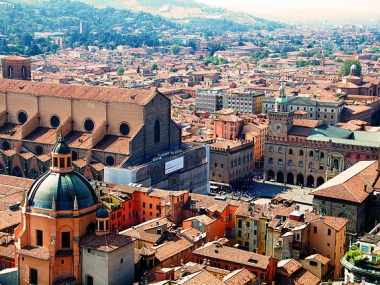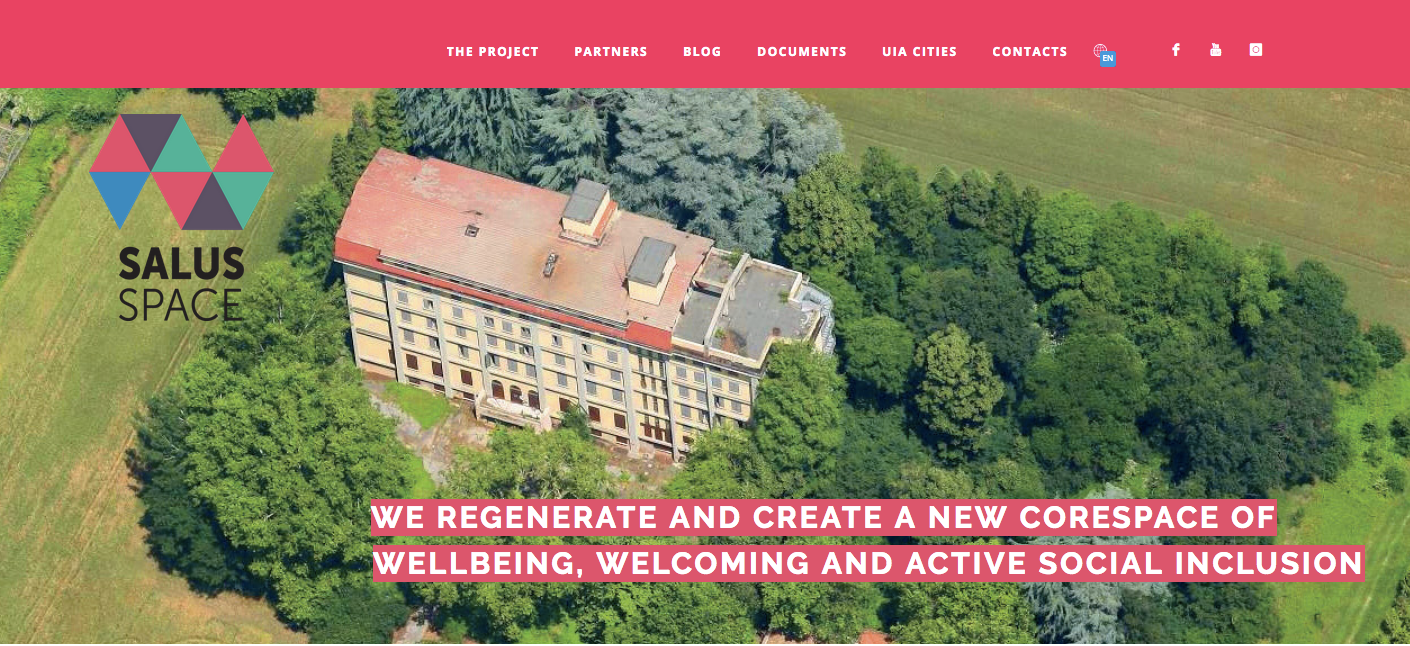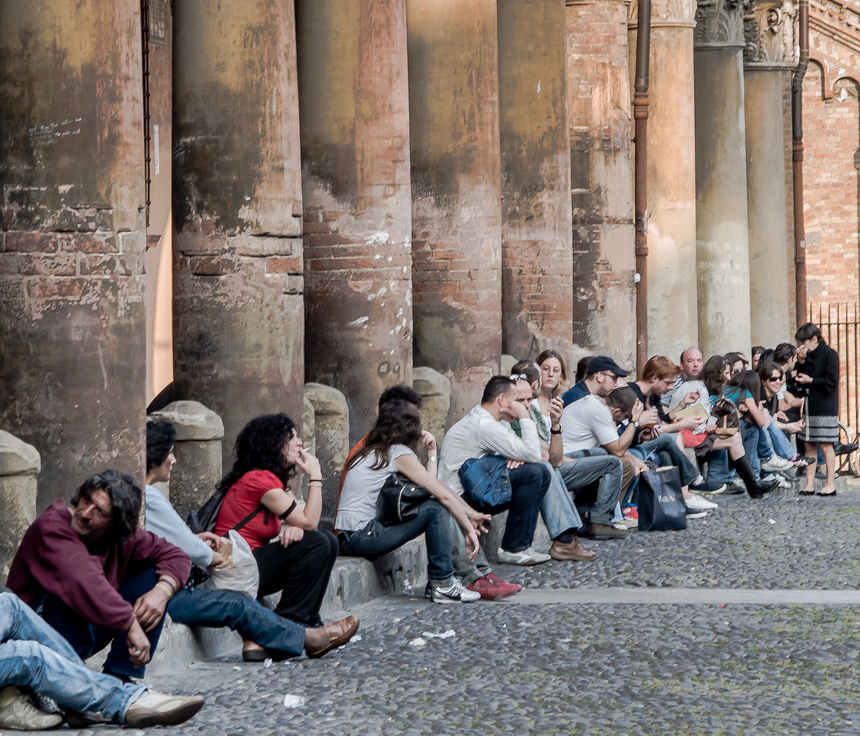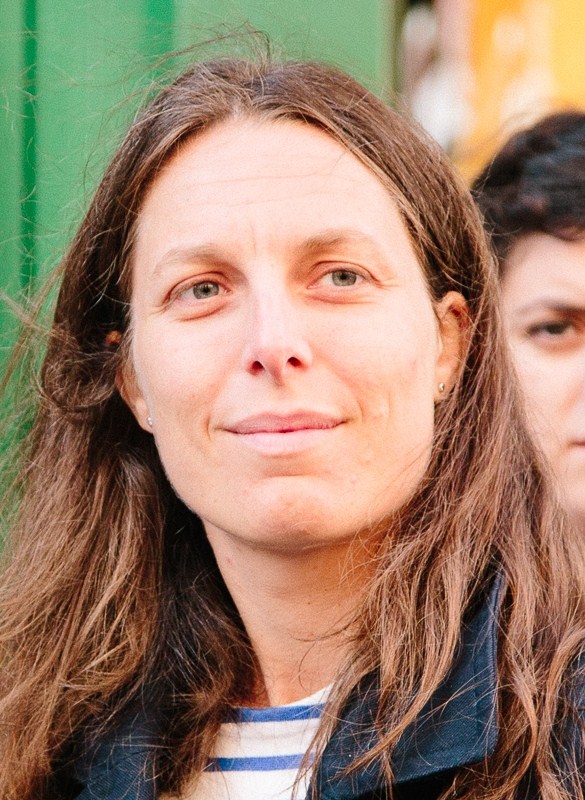Bologna innovates to help its most fragile communities
Edited on
07 June 2019Three of the cities selected in the first call of Urban Innovative Actions (UIA) are working, or have worked, within URBACT on topics similar to their UIA bids: Turin, Bologna and Rotterdam.
We investigated what made these cities successful at being involved in the two European programmes, and asked whether there is – for these cities – something like a trajectory between URBACT and UIA.
This article is the third and last of our series of articles on this topic.
It is based on an interview with Manuela Marsano, from the Economic development and city promotion Department, and Inti Bertocchi, from the social inclusion unit at the City of Bologna.
Learning with other European Cities to help the most fragile population

In its involvement with URBACT, Bologna has demonstrated a strong interest in helping its most fragile communities to get housing and jobs, and to feel fully part of the city.
Bologna has for instance been working hard, in partnership with its Roma communities, to improve their situation in the city. The Municipality of Bologna was a partner of the URBACT network Roma Net, which aimed at overcoming negative attitudes towards Roma, developing the City Local Action Plan as framework for policies and activities targeting the Roma community and improving consultation and engagement with them. Later, Bologna also took part in Roma Net II, which focused on improving access to education, health, housing and services and stimulating employment opportunities for working age Roma.
In addition, the Metropolitan City of Bologna is involved in Job Town 2 showing commitment to helping another fragile group, that of unemployed youth.
A continuous search for social innovation
Bologna is also seriously dedicated to social innovation. With the URBACT network Creative Spin it set tools and methods to trigger creativity and innovation in businesses and other kinds of public and private organisations, by encouraging artists, creative professionals (in advertising, design, architecture), cultural institutions and industries to engage with other sectors to share their competencies and skills.
This commitment to work with young creatives and to involve and retain them in the city continues today with the URBACT network Gen_Y City.
Bologna’s continuous search for innovative governance methods is also clear in the Procure Network, which explores how to bring about economic, social and environmental benefits through a better use of public spending.
Salus Space: An ambitious project to create a new type of space for housing, employment and culture, connecting local communities and newcomers
 All the principles and methods explored by Bologna within URBACT are to be found its Urban Innovative Actions (UIA) project ‘S.A.L.U.S. ‘W’ SPACE – sustainable, accessible, livable, usable social space for intercultural wellbeing, welfare and welcoming’.
All the principles and methods explored by Bologna within URBACT are to be found its Urban Innovative Actions (UIA) project ‘S.A.L.U.S. ‘W’ SPACE – sustainable, accessible, livable, usable social space for intercultural wellbeing, welfare and welcoming’.
The project is to rehabilitate a big abandoned building - Salus Space - check also the website for pictures, which is just outside the city, but pretty close (500 meters from the first building of the city and 10 minutes walk from the closest bus stop). Salus Space will provide temporary housing for up to two years (and an average of 18 months) for about 40 refugees and other people who have a fragile housing situation. The building will include a restaurant and several cultural activities. By involving residents in the management of the building and its activities, the space will also act as a bridge with the city, with learning space to access new opportunities for culture and jobs.
Salus Space is a risky, challenging and difficult project, but one with a strong appeal, that of creating a new centre in the city, where people can come to live, learn, eat and have fun together.
Co-design: A strong principle developed in URBACT
Salus Space is based on two levels of participation: one horizontal, involving citizens and local stakeholders in “co-creation”; and one vertical, with main institutions (Region, Metropolitan City, Prefecture, Municipality and District authorities) providing provide feedback and ensuring links to urban policies.
In this way, the project has been co-designed from the beginning, using approaches Bologna picked up from URBACT. There are 17 partners at local level who are really working together and, from the beginning, the City has involved citizens as well as several other stakeholders. It has also developed a cross-departmental method of working within the municipality.
Right from the application stage the project was co-designed, and this is set to continue throughout the life of the project. At the start, the Municipality made a public call for suggestions on the regeneration and strategy for the building. Currently, in the first phase of the project’s implementation, stakeholders are involved in co-creating a shared vision of the building. An ongoing evaluation of the project realised by citizens and refugees has already started and will last until the end of the project.
 The University of Bologna, one of the project partners, is in charge of implementing the participatory process of co-creation. It gets feedback from the city and stakeholders and ensures their continuous involvement, for instance to design some parts of the project, which have not been pre-defined at the application stage. Currently, one of the topics being investigated is how exactly the space can be used by the city (education and social activity) to make sure the space is lived in by the citizens and not only by the residents of the building.
The University of Bologna, one of the project partners, is in charge of implementing the participatory process of co-creation. It gets feedback from the city and stakeholders and ensures their continuous involvement, for instance to design some parts of the project, which have not been pre-defined at the application stage. Currently, one of the topics being investigated is how exactly the space can be used by the city (education and social activity) to make sure the space is lived in by the citizens and not only by the residents of the building.
There are several ways for citizens to take part in the project. For example, a training scheme allows citizens to become online journalists for the blog and website of the space (saluspace.eu).
Manuela insists that her ways of thinking about participatory processes at all stages of the project comes from the experience developed within URBACT. “The municipality has learnt that there is nothing that can be done without the involvement of the target community” and that “we, as a municipality, can facilitate the process and not just drive it”.
Governance: a key learning from URBACT
Manuela also says that she learnt from URBACT how difficult it is to ensure the well functioning governance of a project, involving several – as many as possible – stakeholders.
In order to build good governance of the Salus Space project from the start, Manuela directly took the principles of the URBACT Local Stakeholders Group and applied them to create a new governance board, involving the right stakeholders.
She even applied those principles to the application process and to structuring the project. Notably Manuela mentions how the strong devolution of ‘work packages’ (i.e. the different aspects) of the project to partners results from her experience with URBACT. That is how she developed trust and learnt to work jointly with several partners.
Taking and giving back to other European cities
To build such innovative projects, Bologna takes inspiration from other European cities. In the case of Salus Space, one of the inspirations was the Madga Hotel in Vienna, in which hosts are welcomed by trained refugees. However, Bologna knows it has to adapt good ideas to its local situation. It is attempting – with Salus Space – a mix of activities it has never seen anywhere else, with modes of operations that are specific to this project. A real challenge!
Exchanging is at the core of Bologna’s approach, and on that point again Bologna applied principles learnt in URBACT to its UIA project.
 To ensure the sustainability of the project, a think-tank has been created to bring in examples from abroad and to help in the final process of capitalising on learnings.
To ensure the sustainability of the project, a think-tank has been created to bring in examples from abroad and to help in the final process of capitalising on learnings.
The project also plans to invest strongly in communicating locally and further afield, sharing what they have learnt, so that others can benefit from Bologna’s Salus Space experiences.
For Bologna, there are strong thematic and methodological connections between URBACT and UIA.
Manuela simply and beautifully explains how one of the main lessons she learnt from URBACT is now applied to thinking and creating innovation in the city, as in the case of the UIA Salus Space project: “Innovation is not about huge changes in one go, but in many small changes and steps that make a big difference”.
 Submitted by s.pruvot@urbact.eu on
Submitted by s.pruvot@urbact.eu on




